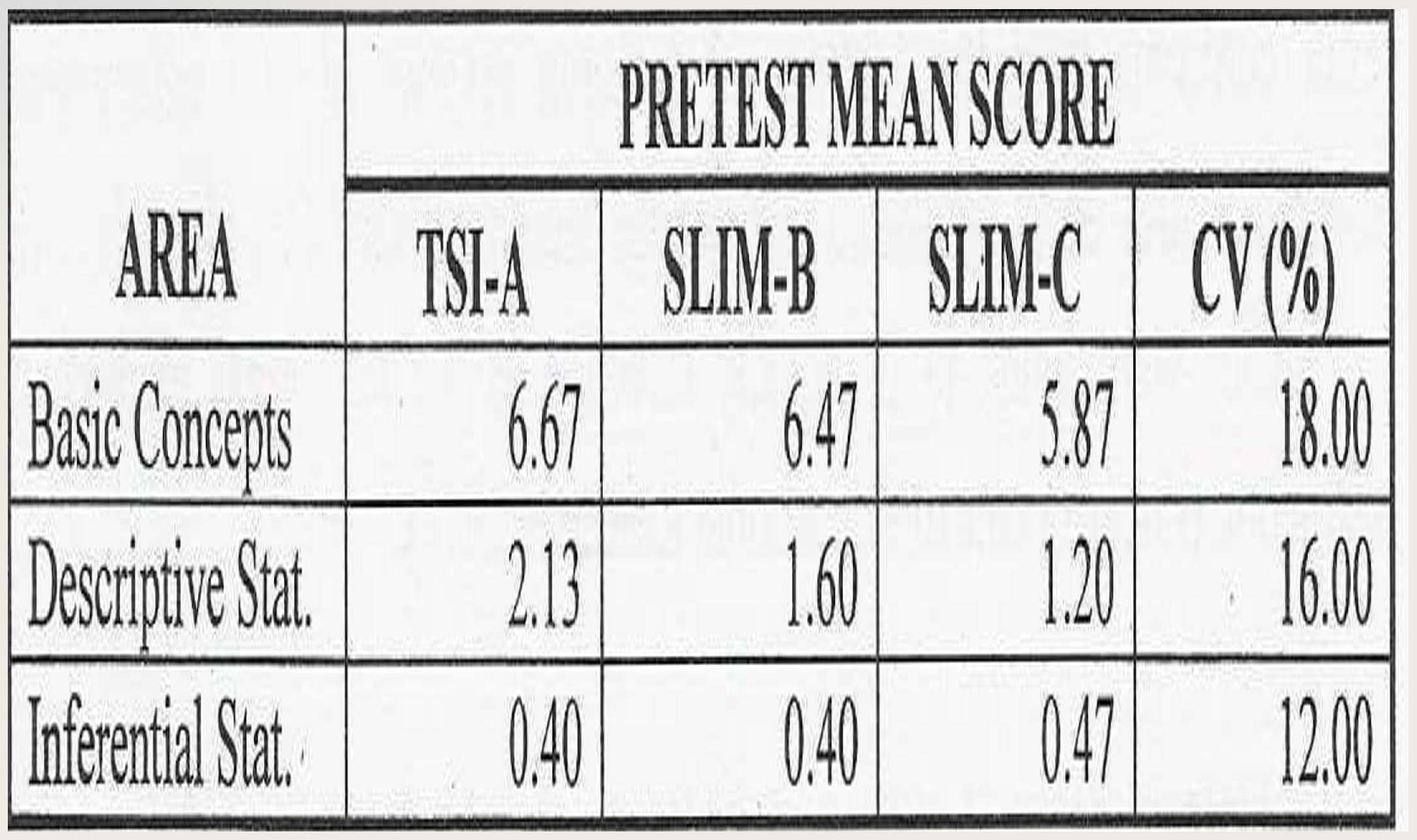Effectiveness of Self-Learning Instructional Material (Slim) in Elementary Statistics
DOI:
https://doi.org/10.59120/drj.v2i1.75Keywords:
self-learning instructional material, academic performance, traditional system of instruction, elementary statisticsAbstract
This study was conducted during the first semester of SY 1994-1995 at the Davao Oriental State College of Science and Technology, Mati, Davao Oriental to provide empirical facts on the effectiveness of Self-Learning Instructional Material (SLIM) in teaching Elementary Statistics to second year college students. A modified non-equivalent pretest-posttest control group design was used. Data was analyzed by means of ANOVA, ANACOVA, LSD and UL Index method for item analysis. Three methods of teaching namely: TSI-A (teaching using Traditional System of Instruction) which served as -the control, SLIM-B (teaching using SLIM plus faculty supervision) and SLIM-C (teaching using SLIM). Findings showed that SLIM-B was the most effective method of teaching Elementary Statistics thus confirming that the teacher factor still play a very important role in the learning process of students.
Downloads
References
Alviar, C. R. 1989. The Commission to Survey Philippine Education. UST Journal of Graduate Research. 19 (1).

Downloads
Published
Issue
Section
License
Copyright (c) 1999 Leonila H. Pajo

This work is licensed under a Creative Commons Attribution-NonCommercial 4.0 International License.
DRJ is an open-access journal and the article's license is CC-BY-NC. This license allows others to distribute, remix, tweak, and build on the author's work, as long as they give credit to the original work. Authors retain the copyright and grant the journal/publisher non-exclusive publishing rights with the work simultaneously licensed under a https://creativecommons.org/licenses/by-nc/4.0/.





